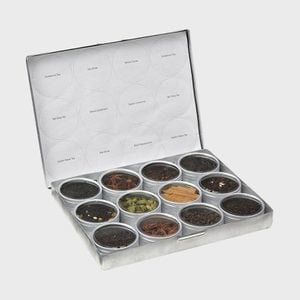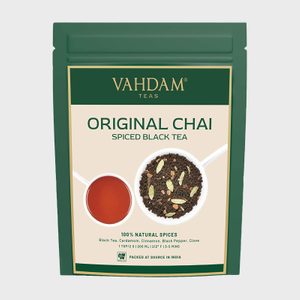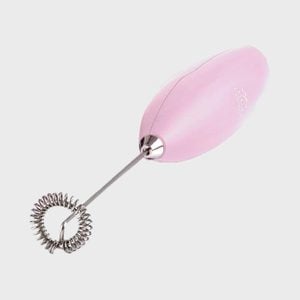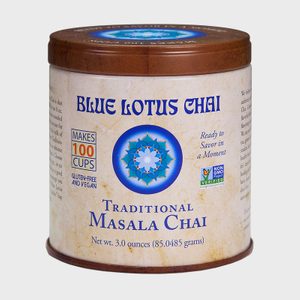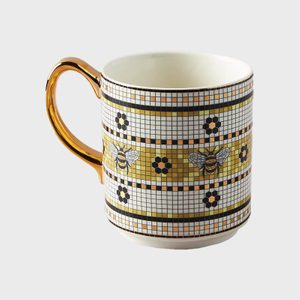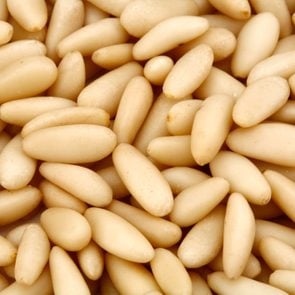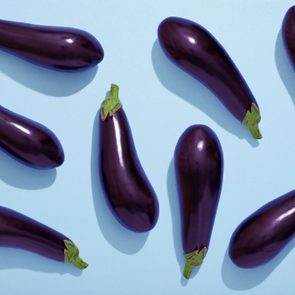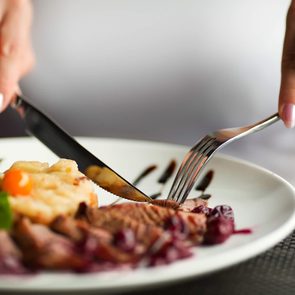What Is Chai Tea, Exactly?
Updated: Nov. 28, 2022

Add some sugar and spice to your life with masala chai, a delicious tea with a fascinating history and surprising health benefits.
Sweet cinnamon, peppery cardamom, and robust black tea tingle along your tongue and spread warmth throughout your body. With creamy milk and sugar to balance out the spice, chai is the perfect drink when you’re craving a treat. But what is chai tea, exactly? Simply put, it’s an Indian tea that started gaining popularity in the United States decades ago. While you’ve always been able to order it at your favorite Indian restaurant, nowadays you can find “chai tea” written on almost every coffee shop menu, and you can even buy cartons of premade chai in your local grocery store.
As niche coffee and tea drinks go mainstream, casual sippers are seeking answers to the big questions: What is cold brew coffee? What’s a macchiato? Whose utterly brilliant idea was it to combine spiced tea, milk, and sugar?
Where does chai tea come from?
The drink has a rich history and cultural significance in India, where chai literally means “tea” in Hindi-Urdu. Here’s a fun tidbit for you food facts trivia fans: When people say “chai tea,” they’re actually saying “tea tea.” While the people of India have a history of drinking tea, particularly as Ayurvedic medicine, the beverage didn’t always include spices, sweetener, and milk. It wasn’t until British colonization—and later, a 20th-century marketing push to get Indians to drink more tea—that chai began to take the form we know and love today. (Perhaps this isn’t a shocker considering Brits put milk in tea.) These days, your favorite spicy-sweet sip is the same beverage many people in India prepare, a concoction more accurately known as masala chai, or mixed spice tea. Blend it at home to create the perfect gift for tea lovers or a pick-me-up for mornings when you need some extra pep in your step.
What is chai tea made of?
Chai is a combination of spices, a strong black tea, milk, and sugar. As a huge subcontinent with many cultural differences between regions, India has many different ways to prepare chai.
For starters, the black tea can range from malty Assam, which is the most common, to a more floral Darjeeling. Regardless of type, loose leaves are preferable to bagged tea for a richness of flavor. The drink almost always includes milk with a higher fat content, such as the traditional buffalo milk or whole cow’s milk. If dairy’s not for you, try a creamy plant-based milk, like oat milk, which will also bring out the spices.
Speaking of spices: The blend typically includes cardamom, cinnamon, ginger, cloves, and black peppercorns but can also contain star anise and nutmeg. And while jaggery, or unrefined sugar, is used in many parts of India, plain white sugar, honey, or your favorite tea sweeteners also work to meld the flavors in an irresistible combination.
With all of these variations on a theme, you may still be asking, “What is chai tea?” But it’s precisely this diversity in ingredients that makes chai the sort of drink that keeps you coming back for more.
What’s the difference between chai tea and a chai tea latte?
If you see “chai tea” or “chai tea latte” on your local coffee shop menu and are confused about which one to order, you’re not alone. They sound similar, but there’s a distinct difference. Chai uses milk that’s simply heated, whereas chai lattes use milk that’s steamed and frothed.
Coffee shops often use the steam wand on an espresso machine to steam and froth the milk with hot water vapor, but you can achieve similar results at home, sans expensive kitchen appliances. Just use a milk frother, immersion blender, french press, or even a mason jar (and shake!) to get that frothy foam.
It’s an essential step of the process. Frothing the milk agitates the liquid, breaking down (denaturing) the proteins and forming air bubbles. This gives the drink a thicker texture and makes the milk milder and sweeter. And it gives you a chance to create beautiful latte art as you pour the foamy goodness into your chai.
What are the benefits of chai tea?
With roots in traditional holistic medicine, masala chai boasts a handful of health benefits related to its tea and spices, each carrying distinct benefits. Cardamom, for instance, has been linked to lower cholesterol and anti-inflammatory properties. Cinnamon, too, has been found to lower cholesterol and inflammation, and studies have associated it with lower blood glucose. Fresh ginger brings its own health properties; it’s loaded with vitamin C, potassium, and magnesium, and it can aid in digestion and reduce nausea. The addition of black tea leaves provides powerful antioxidants and brings down the risk of cardiovascular disorders by lowering blood pressure.
Try to get these ingredients whole rather than pre-ground and powdered. Grinding chai spices yourself not only ensures the quality of the flavor but also ensures that the healthy oils are preserved and effective as you steep the tea.
Is chai healthier than coffee?
Chai may have healthful properties, but it’s not automatically better for you than a cup of joe. Two things matter a great deal when determining which beverage is tops for your health: the type of chai you’re drinking and the type of coffee you like to drink.
Many coffee shops use prepackaged chai mix rather than fresh spices, which may cut down on the spices’ health benefits. And then there’s the fact that chai is often made with high-fat milk and sugar.
Sure, if your usual coffee order is a white chocolate mocha, you can consider a chai tea latte an upgrade. It has 190 fewer calories, 13 fewer grams of fat, and 11 fewer grams of sugar. But it’s a whole lot less healthy than brewed coffee or even a latte. With 42 grams of sugar in one grande cup—almost 10 grams more than a caramel macchiato—Starbucks’ chai tea latte may be a nice once-in-a-while treat, but it shouldn’t be your go-to drink. And when you do indulge, try to err on the modest side when it comes to Starbucks cup sizes, and skip the pumps of syrup.
That said, black tea does contain less caffeine than coffee, and a homemade melange of spices has many health benefits. To make a healthier chai, skip the dairy and opt for plant-based milk instead. Then use sugar in moderation, or skip it altogether.
Of course, if you’re looking for the best of both worlds and still itching for your regular coffee fix, try a dirty chai, which is a chai tea with a shot of espresso. The delectable possibilities are truly endless with masala chai.
You’ve learned the answer to the question, “What is chai tea?” Next up: Find out what bubble tea is and whether tomatoes are fruits or vegetables.
Sources:
- Seven Pots of Tea: An Ayurvedic Approach to Sips & Nosh by Nandita Godbole
- Journal of Diabetes and Metabolic Disorders: “The effect of cardamom supplementation on serum lipids, glycemic indices and blood pressure in overweight and obese pre-diabetic women: a randomized controlled trial”
- Nutrition Today: “Cardamom: Potential Health Benefits”
- Diabetes Care: “Cinnamon improves glucose and lipids of people with type 2 diabetes”
- Evidence-Based Complementary and Alternative Medicine: “Cinnamon: A Multifaceted Medicinal Plant”
- PLOS One: “The effect of black tea on blood pressure: a systematic review with meta-analysis of randomized controlled trials”
- International Journal of Health Sciences: “Molecular evidences of health benefits of drinking black tea”
- Indian Journal of Biochemistry and Biophysics: “Blood pressure lowering, fibrinolysis enhancing and antioxidant activities of cardamom (Elettaria cardamomum)”



















